Are you tired of dealing with tight buttock muscles that cause discomfort and limit your mobility?
Don’t worry, you’re not alone. Many people face this issue due to various reasons.
In this article, we’ll explore the importance of loosening tight buttock muscles and the common causes behind them.
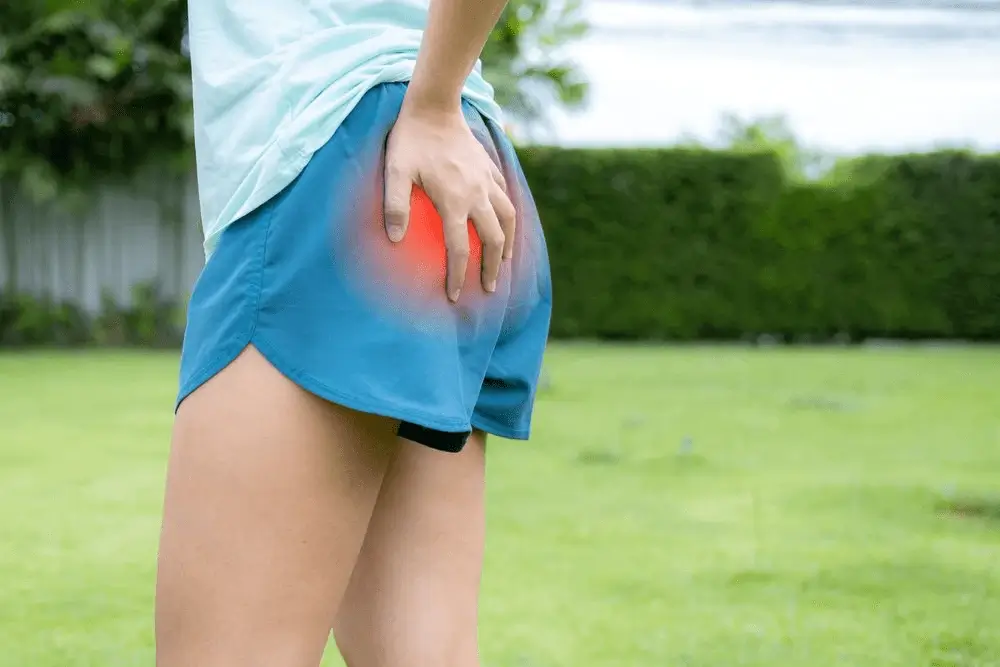
I know what you’ve been through
One common symptom of tight buttock muscles is experiencing pain or discomfort in this area. You may feel a dull ache or a sharp, localized pain that hampers your everyday activities.
Additionally, tightness in the buttock muscles can lead to a limited range of motion, making it difficult to perform certain movements or even sit for extended periods.
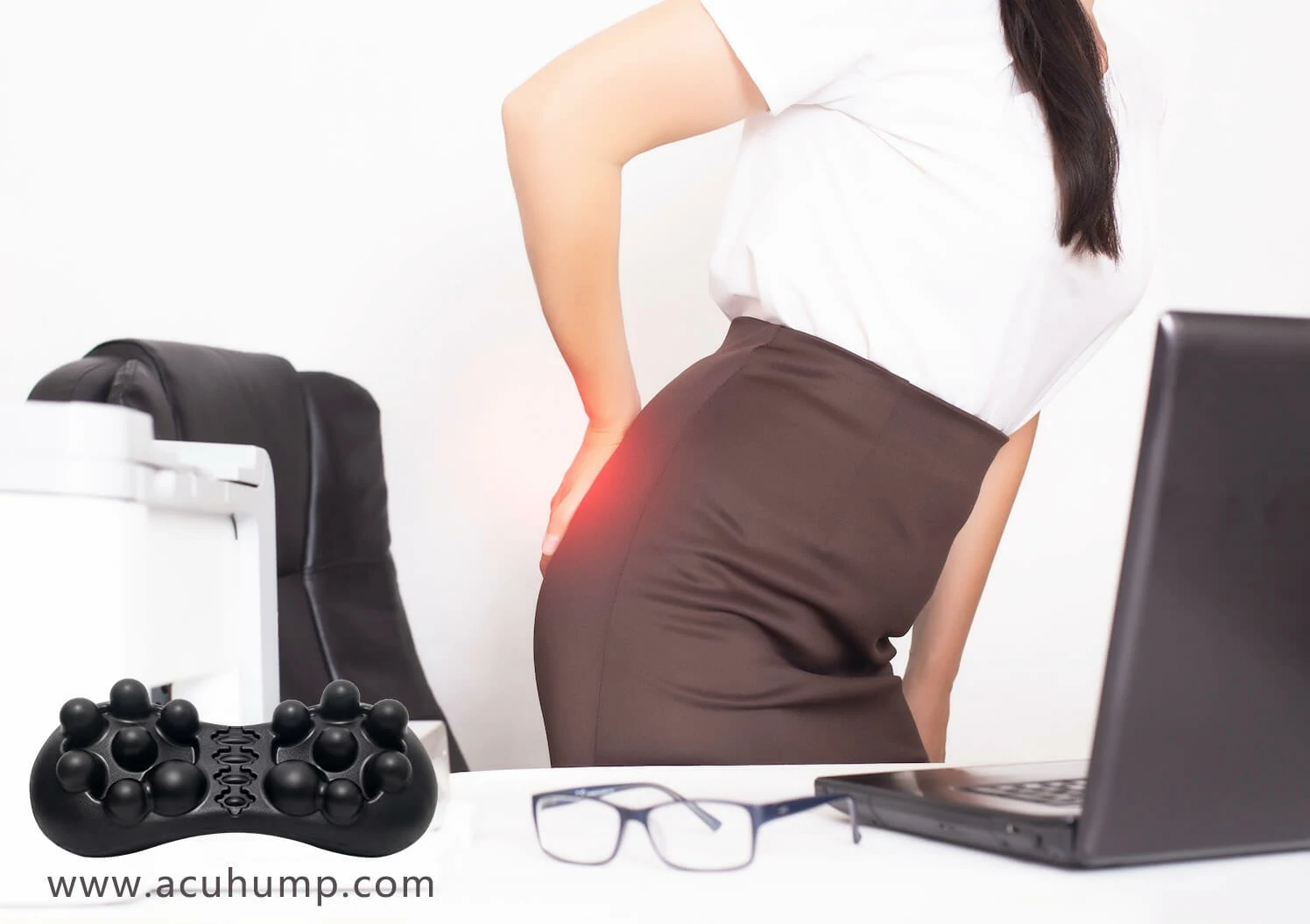
It’s important to note that tight buttock muscles can also manifest as back or hip pain. This occurs because the gluteal muscles work in conjunction with other muscles in the lower back and hip region. When the buttock muscles are tight, it can create imbalances or strain in these surrounding areas, resulting in discomfort and potentially affecting your overall mobility.
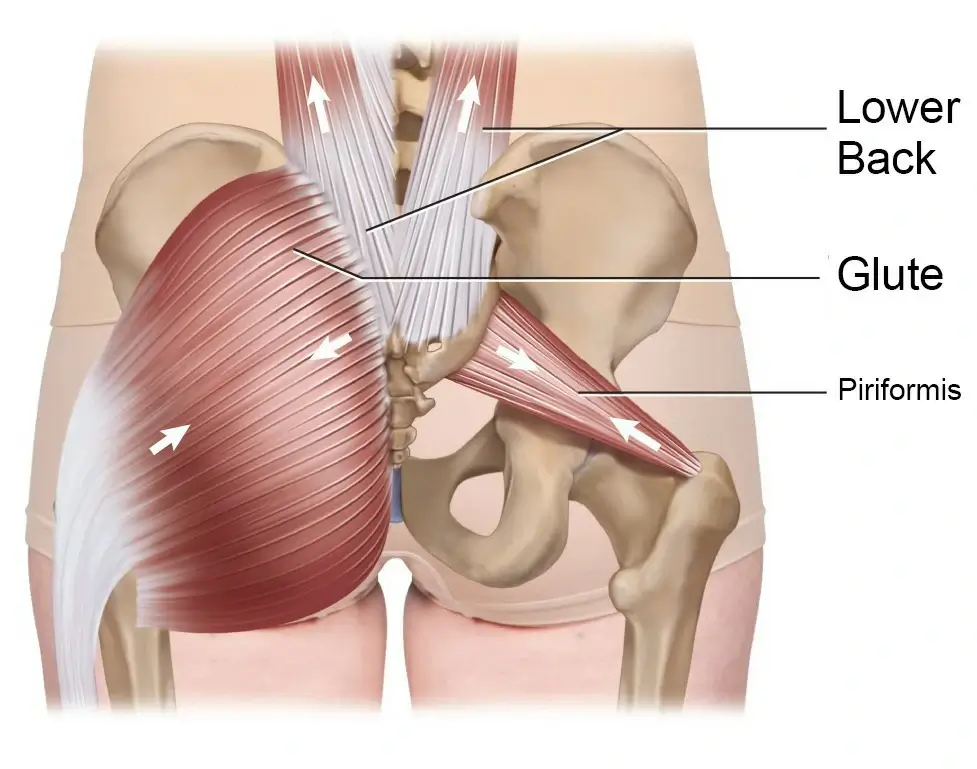
Locate the source of your pain
Understanding the tightness in buttock muscles is crucial in finding effective solutions. The buttock muscles, which include the gluteal muscles, piriformis muscles, are responsible for supporting the body during various movements. Whether it’s walking, sitting, or maintaining proper posture, these muscles are constantly at work.
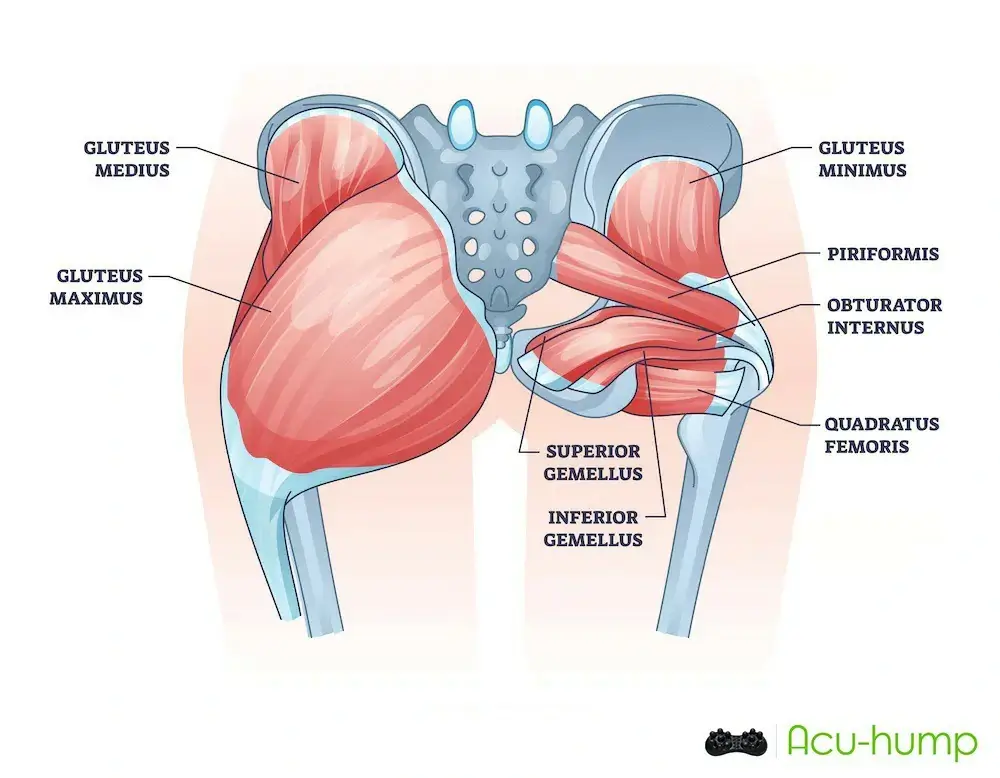
When these muscles become tight, it can lead to discomfort and limited mobility. Tightness in the buttocks can also be associated with specific conditions such as sciatica, deep glute syndrome, or piriformis syndrome.
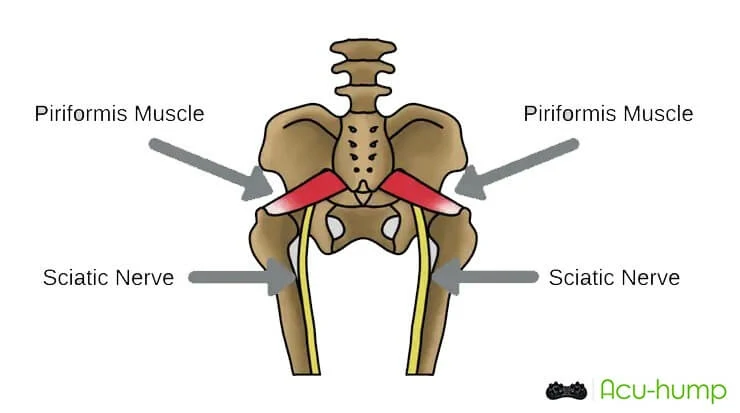
Sciatica occurs when the sciatic nerve, which runs through the buttock and down the leg, becomes irritated or compressed.
Deep glute syndrome refers to chronic gluteal pain caused by muscle imbalances or tightness.
On the other hand, piriformis syndrome occurs when the piriformis muscle, located deep in the buttock, compresses the sciatic nerve.
No matter which condition caused by tight buttock muscles you’re dealing with, taking necessary measures can help alleviate discomfort and improve your overall well-being. Whether it’s sciatica, deep glute syndrome, or piriformis syndrome, consistency is key to achieving results.
Ways to Loosen Tight Buttock Muscles
When it comes to loosening tight buttock muscles, incorporating various methods can yield optimal results. One effective approach is massage therapy, which can provide tremendous relief by targeting the tension in your gluteal muscles. Consider seeking the assistance of a professional massage therapist who specializes in deep tissue or sports massage to receive the maximum benefits.
1. Stretching exercises:
1.1 Buttocks Stretches:
Combining massage therapy with specific stretching exercises and self-myofascial release techniques can further enhance the effectiveness of your routine. Let’s delve into these methods in more detail.
First, let’s explore some glute stretches that can effectively alleviate tightness. The standing glute stretch can be performed by crossing one ankle over the opposite knee and gently leaning forward. This action helps stretch the gluteal muscles while releasing tension in the buttocks.
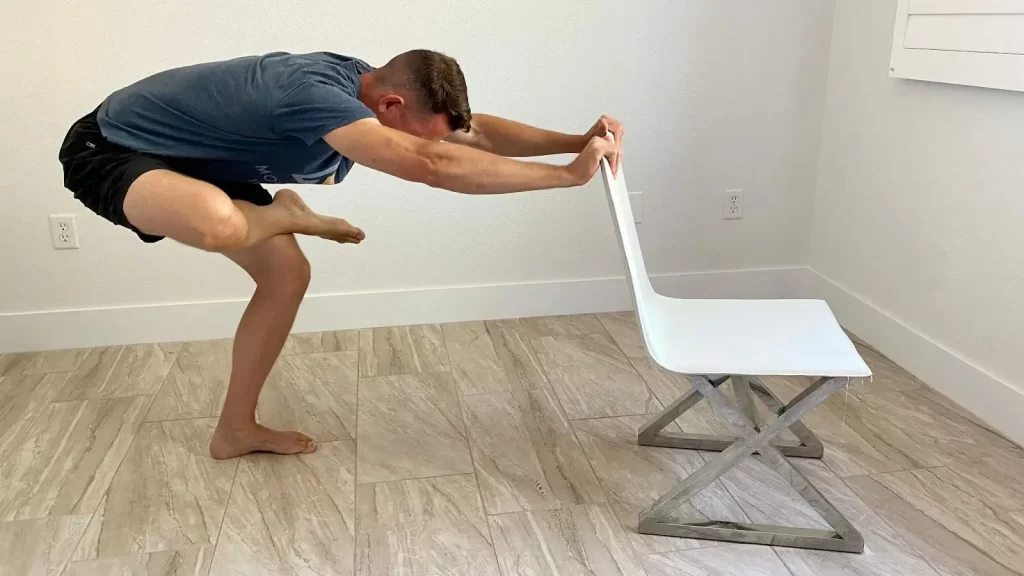
Another option is the supine figure-4 stretch, which is a highly effective stretch for alleviating tightness in the buttocks.
Lie on your back, bend both knees, and place one ankle over the opposite knee. Gently pull the bottom knee towards your chest, feeling the stretch in the gluteal muscles.
This stretch helps release tension and promotes flexibility in the buttock area.
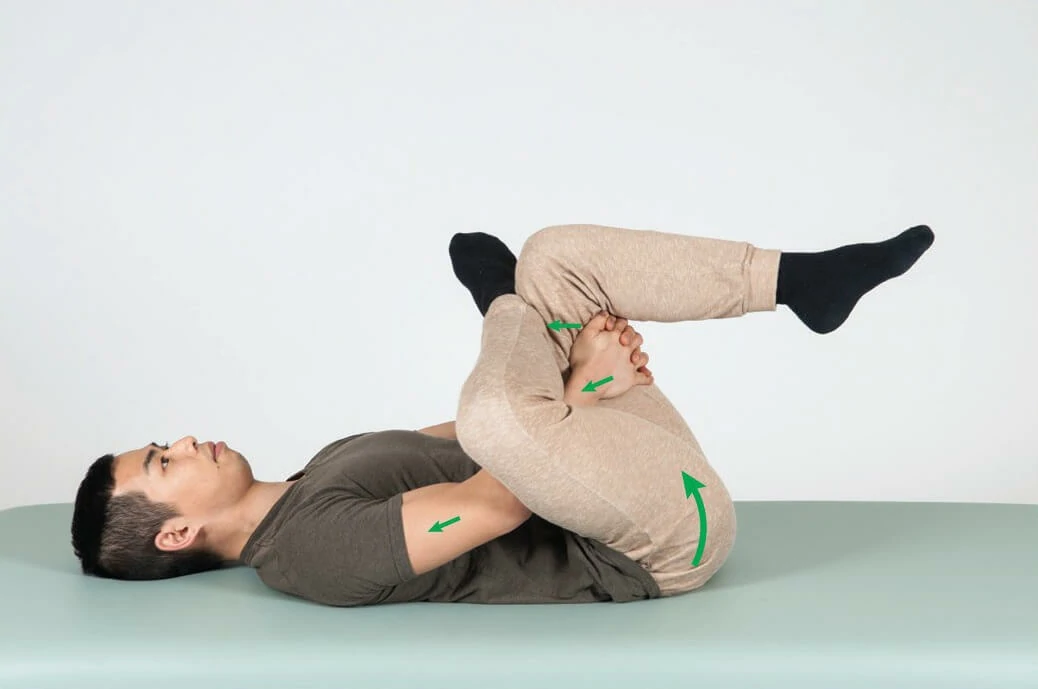
By incorporating these stretching exercises into your routine alongside massage therapy, you can significantly reduce tightness in your buttock muscles.
Remember to perform these stretches regularly and listen to your body, adjusting the intensity as needed. Consistency and a comprehensive approach are key to achieving long-lasting relief and enjoying the benefits of relaxed and flexible buttock muscles.
2.2 Lower Back Stretches:
When it comes to relieving tension in the buttock muscles, it’s essential not to neglect the lower back. By incorporating lower back stretches into your routine, you can address any underlying issues that may be causing compensatory muscle imbalances and recurring pain. One effective lower back stretch is the supine knee-to-chest stretch.
To perform the supine knee-to-chest stretch, lie on your back and gently bring one knee towards your chest, hugging it with your hands. You should feel a gentle stretch along your lower back and buttock area. Hold the stretch for about 20-30 seconds before releasing and repeating with the other knee.
By including this stretch in your routine, you can target the lower back muscles and alleviate tension that may be contributing to tightness in the buttocks. Remember to perform this stretch in a controlled and pain-free manner. It’s always important to listen to your body and adjust the intensity as needed.
Incorporating lower back stretches alongside stretches specifically targeting the buttock muscles and massage therapy can provide a comprehensive approach to release tension and promote overall flexibility and well-being.
2. Self-myofascial release techniques
Acu-hump buttock massager
When it comes to relieving tightness in the buttock muscles, self-myofascial release techniques can be incredibly effective. One tool that stands out in this regard is the Acu-hump. This innovative tool is a game-changer when it comes to releasing tension and promoting muscle relaxation.
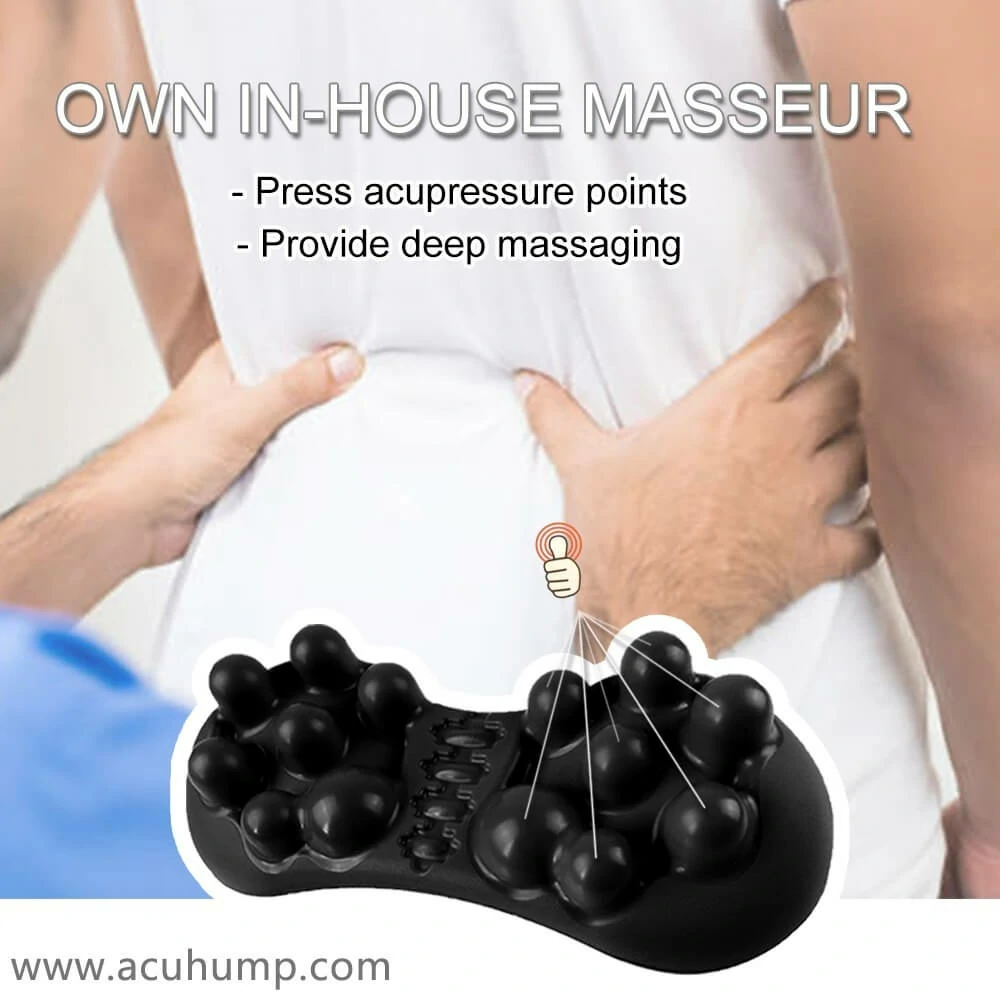
Acu-hump® Release Your Butt and Back
Using the Acu-hump is simple yet highly effective. Position the Acu-hump against your buttocks and lower back area, applying deep pressure. The acupressure points on the tool target the knots and trigger points in your muscles, helping to release tightness and alleviate discomfort. By using the Acu-hump along the affected areas, you can experience significant relief and relaxation.
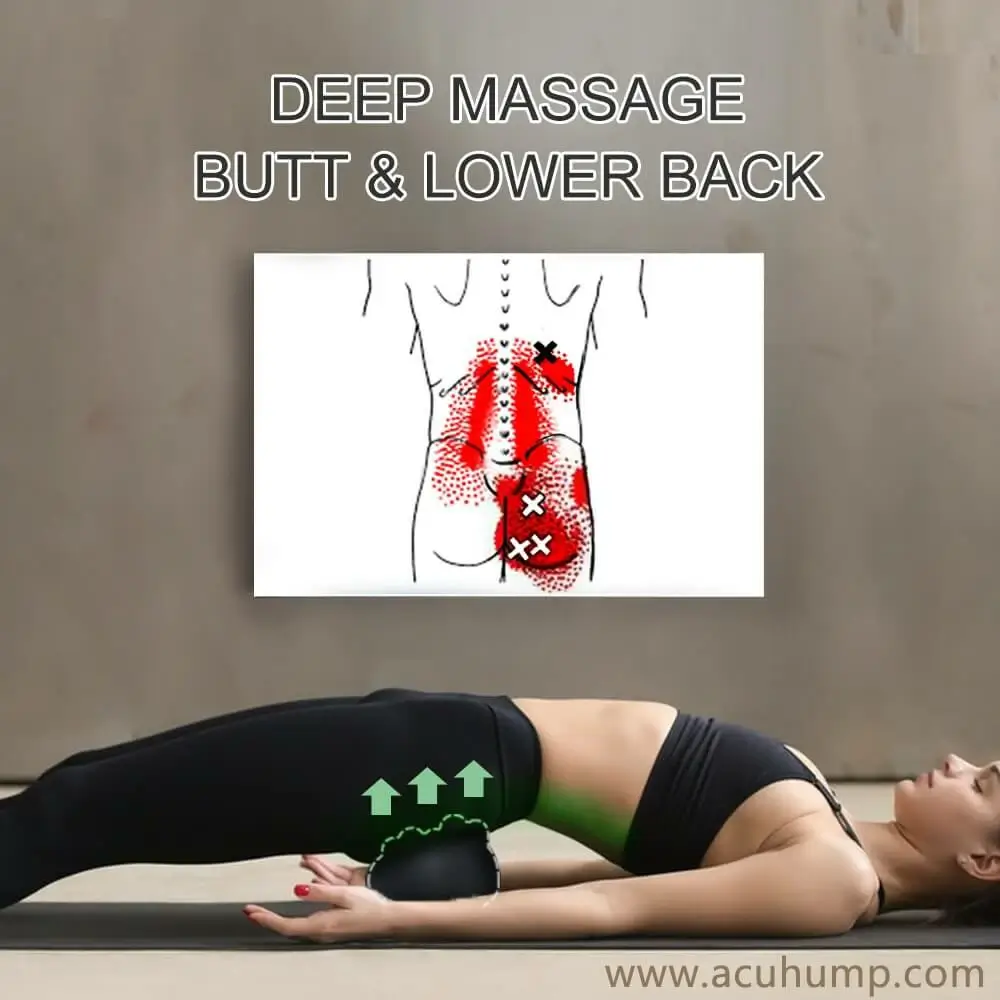
Acu-hump® Release Your Butt and Back
To enhance the benefits of the Acu-hump, consider combining it with trigger point massage therapy. Apply pressure on specific trigger points using the tool, focusing on areas of high tension or discomfort. This combination can help further alleviate tightness and provide deep relaxation, allowing the muscles in your buttocks to unwind and release built-up tension.
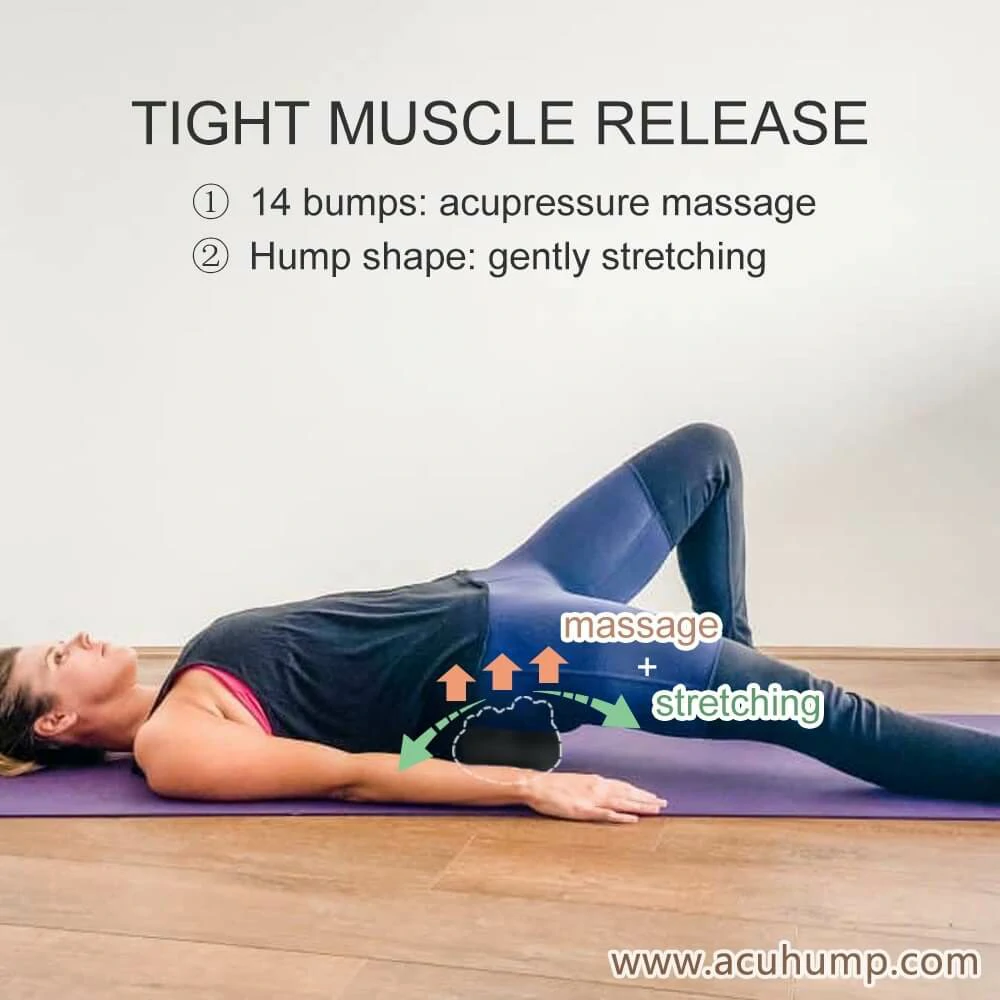
Acu-hump: 30-day return policy. No risk for you.
Incorporating the Acu-hump into your self stretching routine can be a game-changer in your journey towards loosening tight buttock muscles. Remember to utilize the tool consistently and follow proper techniques to optimize its effectiveness. As you combine it with trigger point massage therapy, you can experience enhanced relief, relaxation, and improved overall well-being.
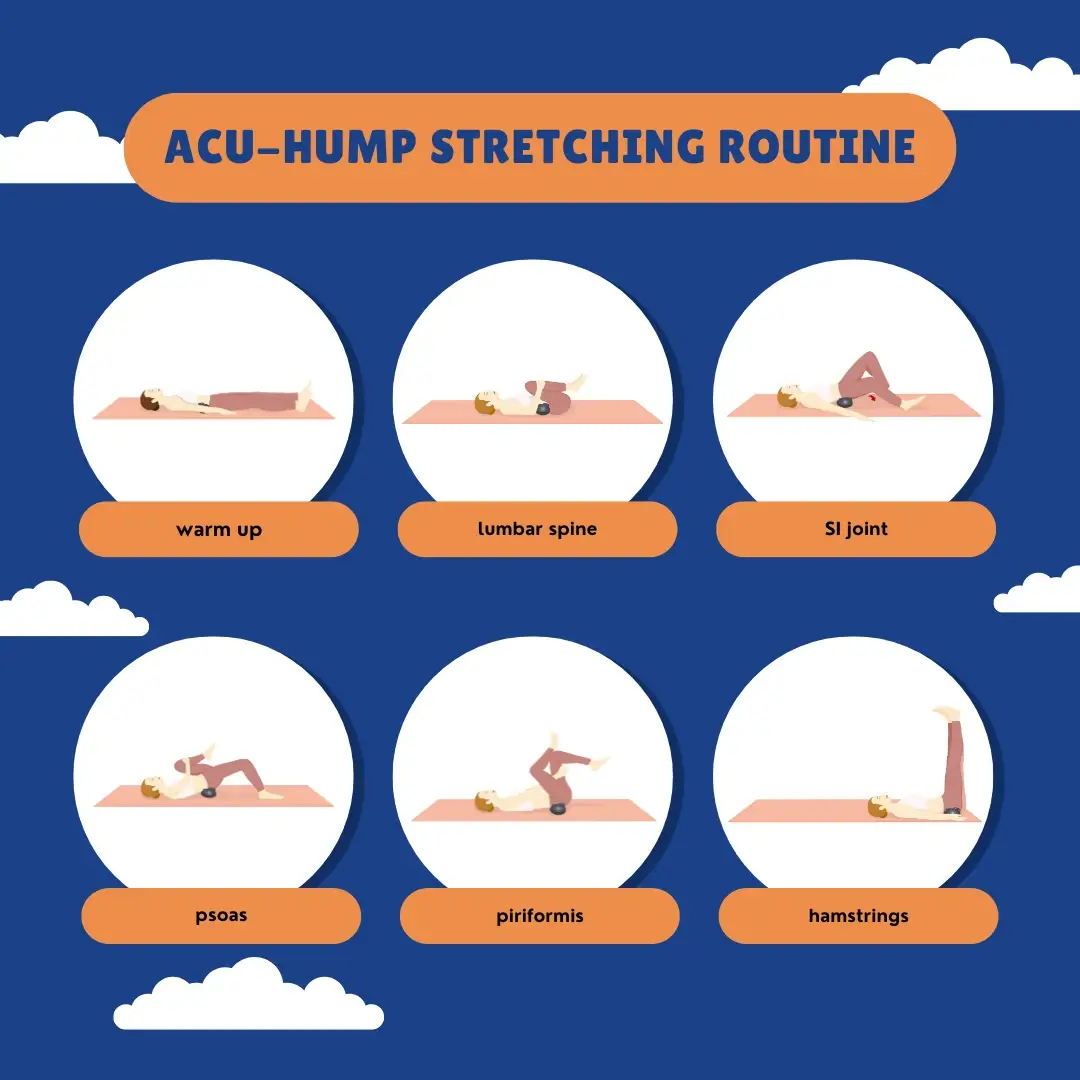
Acu-hump: Full refund policy. No risk for you.
3. Strengthening exercises
In addition to relaxation techniques, another strategy to address tight buttock muscles is to incorporate strengthening exercises. Strengthening the gluteal muscles and core can provide stability and support to the buttock area, leading to improved muscle balance and reduced tightness.
One effective exercise for strengthening the buttock muscles is glute bridges. Lie on your back with your knees bent and feet flat on the floor. Engage your glutes and core, then lift your hips off the ground until your body forms a straight line from your knees to your shoulders. Hold the position for a few seconds before slowly lowering your hips back down. Repeat this exercise for several repetitions, focusing on maintaining proper form and engaging the gluteal muscles throughout.
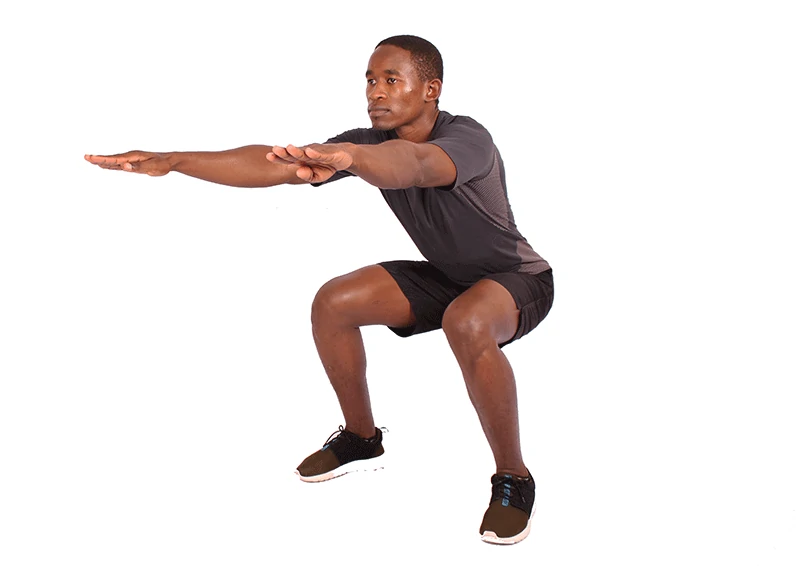
Another exercise to consider is clamshell exercise. Lie on your side with your knees bent and feet together. Keeping your feet touching, lift your top knee while keeping your hips stable. Lower your knee back down and repeat for several repetitions on each side. This exercise targets the gluteus medius, a key muscle in the buttock area.
By incorporating these strengthening exercises into your routine, you can improve muscle strength and stability in the buttock area, helping to reduce tightness and alleviate discomfort. Remember to start with proper form and gradually increase the intensity as your strength improves. Consistency is key, so aim to incorporate these exercises into your routine regularly to experience the full benefits.
Prevention of Tight Buttock Muscles
Prevention is undoubtedly better than cure when it comes to avoiding tight buttock muscles. By incorporating certain habits and practices into your lifestyle, you can proactively reduce the likelihood of experiencing tightness and discomfort.
Regular exercise and stretching routines play a crucial role in maintaining the flexibility and overall health of your muscles, including the buttocks. Dedicate time to engage in exercises that target the gluteal muscles, such as squats, lunges, or other glute-focused workouts. Stretching exercises, as mentioned earlier, can help keep the muscles supple and prevent tightness from occurring.
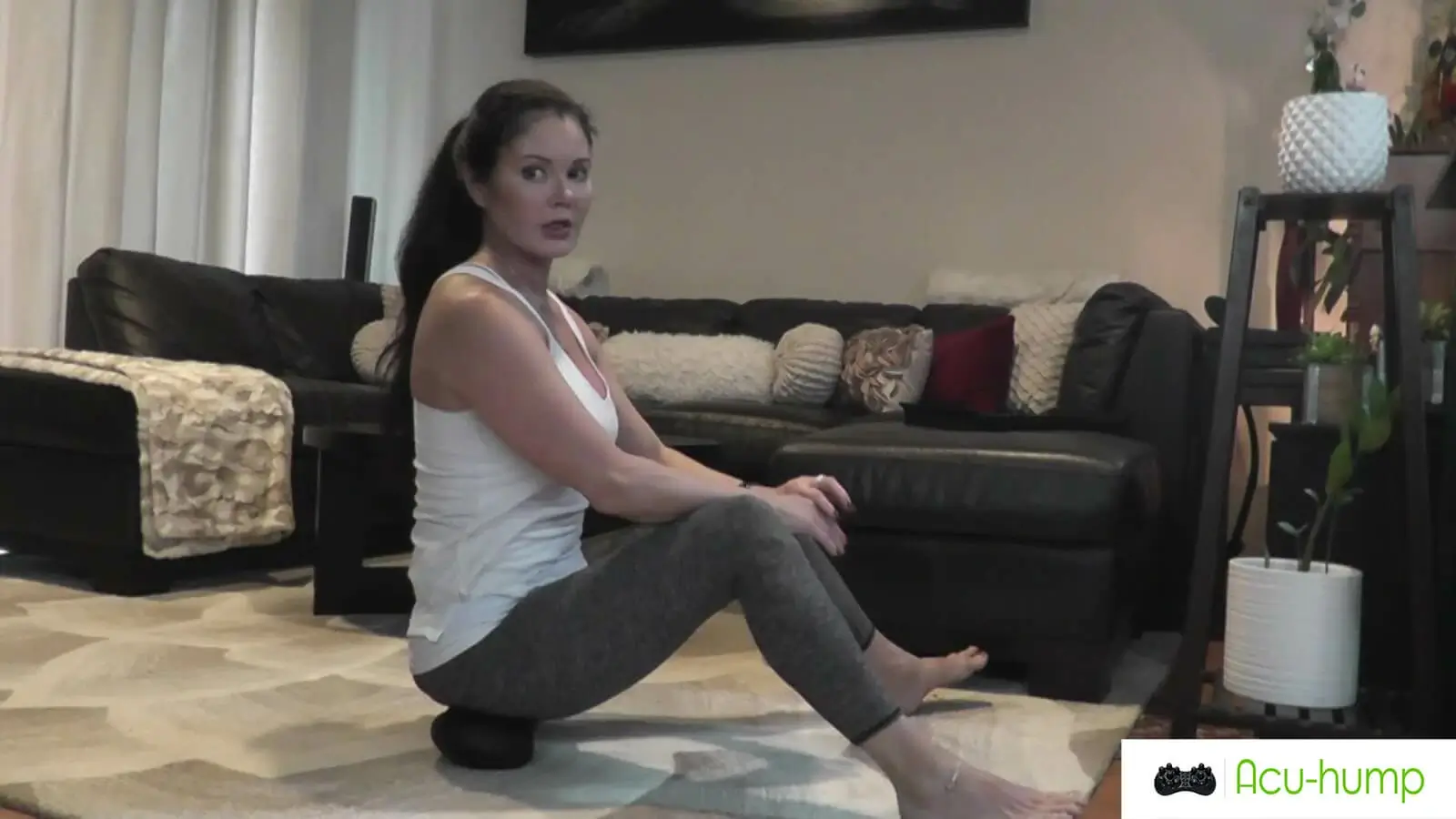
Consider utilizing helpful tools like the Acu-hump to assist you in your exercise and stretching routines. The unique design of the Acu-hump allows for targeted pressure and release in the buttock muscles, promoting relaxation and preventing tension buildup.
In addition to exercise, pay attention to your posture. Whether sitting or standing, maintaining good posture is essential to avoid putting unnecessary strain on your buttock muscles. Practice sitting with a straight back, shoulders relaxed, and feet planted on the floor. When standing, distribute your weight evenly between both feet and engage your core muscles for support.

Lastly, remember to take regular breaks during prolonged periods of sitting. Whether you’re at the office or engaged in any sedentary activity, get up and move around every hour or so. Take short walks, perform gentle stretches, or even utilize the Acu-hump during these breaks to promote blood circulation and relieve any potential tension buildup in the buttock muscles.

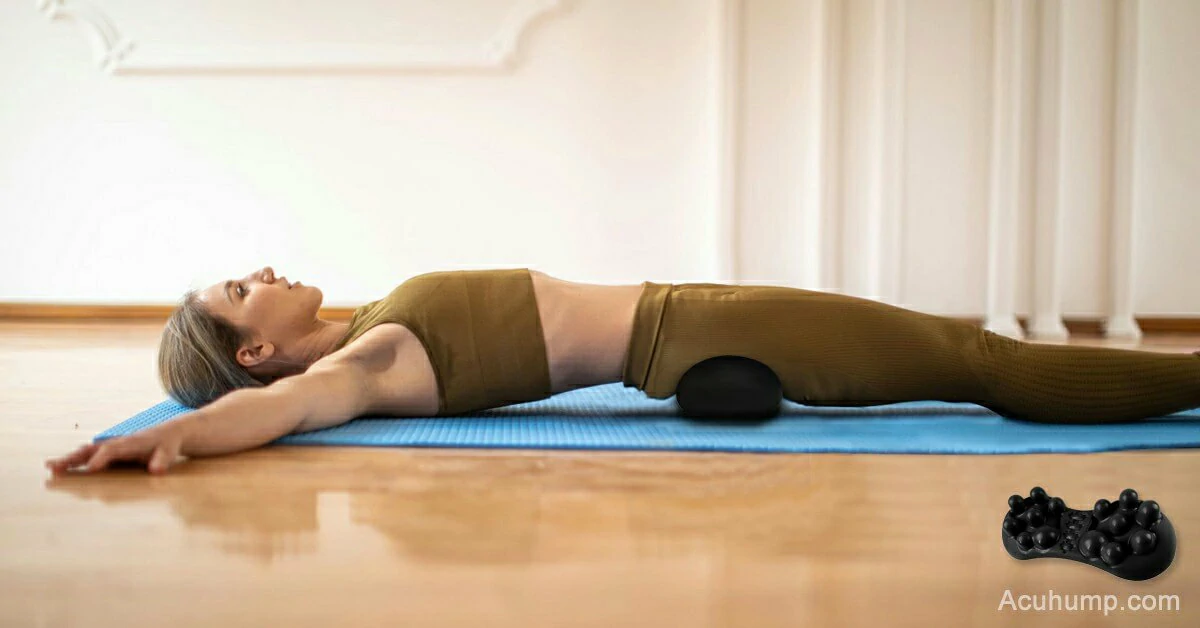
Acu-hump®
Loosen Tight Buttocks
By incorporating these preventative measures into your lifestyle, you can significantly reduce the occurrence of tight buttock muscles. Consistency and mindfulness in maintaining habits such as regular exercise, proper posture, and regular breaks will go a long way in ensuring the health and flexibility of your buttock muscles.
When to Seek Professional Help
If you experience persistent or worsening pain, or if home remedies do not provide noticeable improvement, it’s time to consult a healthcare professional. They can analyze your condition better and provide personalized guidance.
Taking care of your buttock muscles is essential to maintain your overall well-being. By incorporating stretching exercises, self-myofascial release techniques with Acu-hump, and strengthening exercises into your routine, you can loosen those tight buttock muscles and bid farewell to discomfort. Remember, prevention is key, so make these practices a part of your daily life. Don’t let those tight muscles hold you back any longer!

Ready to experience the benefits of Acu-hump for yourself?
Click here to grab your own Acu-hump and start your journey towards pain-free buttock muscles today!
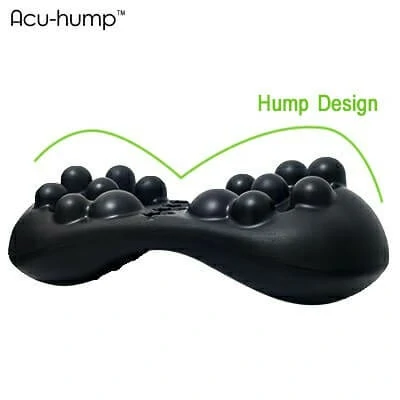
Get Your Effortlessly Buttocks
